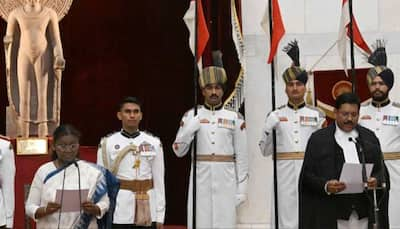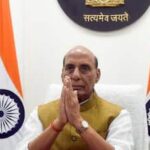Justice Bhushan Ramkrishna Gavai was sworn in as the 52nd Chief Justice of India (CJI) on Wednesday, a landmark moment as the first Buddhist to head the country’s judiciary. The ceremony was conducted at Rashtrapati Bhavan with President Droupadi Murmu present. Justice Gavai takes over from the outgoing CJI Sanjiv Khanna, who retired on Tuesday. His term will last a little more than six months until November 23, 2025, when he attains the compulsory retirement age of 65.
A native of Maharashtra’s Amravati, Justice Gavai is also the second member of the Scheduled Caste community to become the CJI, after Justice K.G. Balakrishnan. Just seven judges from the Scheduled Castes or Scheduled Tribes have been part of the Supreme Court bench since its establishment in 1950.
| Delhi: President Droupadi Murmu administers oath of office to Justice BR Gavai as the Chief Justice of India (CJI).
(Video Source: President of India/social media)
— ANI (@ANI)
Justice Gavai has been outspoken about the role of affirmative action in his life. Addressing a function in April 2024, he gave credit to Dr. B.R. Ambedkar for opening the path for individuals from downtrodden communities. “It is solely due to Dr B.R. Ambedkar’s efforts that someone like me, who studied in a semi-slum area at a municipal school, could attain this position,” he had said, ending his address with “Jai Bhim,” which earned him a standing ovation.
Justice Gavai, who was appointed to the Supreme Court on May 24, 2019, has sat on a number of Constitution Benches and assisted in landmark judgments. He sat on the five-judge bench that unanimously ruled in favour of the Centre’s 2019 revocation of Article 370, stripping Jammu and Kashmir of its special status. He also sat on the bench which held the scheme of electoral bonds unconstitutional earlier this year.
Justice Gavai started his legal practice in 1985 with former Advocate General and judge of the Bombay High Court Raja S. Bhonsale. He was made an Additional Judge of the Bombay High Court in 2003 and was made a permanent judge in 2005. He practiced mostly constitutional and administrative law at the Nagpur Bench of the Bombay High Court and was standing counsel to various civic bodies and universities in Maharashtra.
His ascension to the highest judicial office is both a personal achievement and a symbolic moment of representation and inclusion in India’s highest court.
Stay informed on all the , real-time updates, and follow all the important headlines in and on Zee News.








